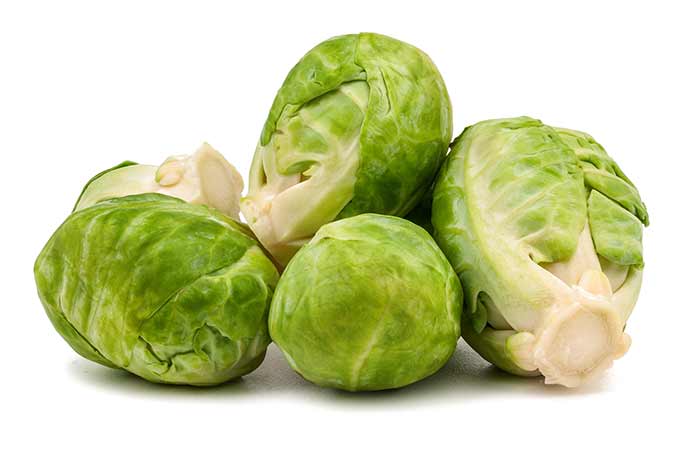
Modern Brussels sprouts were first cultivated in Belgium, where they were named after the capital, Brussels. They are part of the brassica family and are basically little cabbages.
Jump to:
When are brussels sprouts in season?
Brussels sprouts are in season in the US throughout fall and winter, from September through March. When they aren't in season, grocery stores import them from Mexico and many Asian countries.
When you buy brussels sprouts in season, they taste much better because they go from farm to your table relatively quickly. The fresher they are, the better their flavor.
Importing in the off-season increases storage time and possible exposure to extreme temperatures during transport. The longer brussels sprouts are stored, the stronger their flavor gets. A few studies even show several chemical compounds that contribute to bitter flavors increase with commercial storage, like sulphoraphane, while total sugars decreased.
To sum it up - seek out fresh brussels sprouts for that delicate, sweeter, nutty flavor. The longer they are stored, the more bitter and the less sweet they will be.
See what else is in season at the same time: January, February, March, and in September, October, November, and December.
What do they taste like?
Brussels sprouts taste like a cross between cabbage and broccoli with an earthy, sometimes bitter flavor that often gets mellow and sweet when cooked. Their texture is similar to their cruciferous family members (broccoli, cauliflower, and cabbage) with a crunchy exterior but soft interior when cooked.
They smell fairly normal when whole, but once cut or cooked, you might notice a sulfur like smell. "This is because the scents and flavors aren’t created until you chop, cook, or chew," as explained by Guy Crosby at Harvard.
Boiling is the most likely way to make brussels sprouts smell very sulfuric and taste bitter. But when roasted, they take on a wonderfully complex flavor that is both sweet and a little nutty.
Bitter flavor
Brussels sprouts can be bitter, similar to the bitter flavor in broccoli or kale. They are bitter for several reasons.
One reason is that the longer they are stored, the more bitter and less sweet they become. But even with fresh sprouts, the flavor can take a bitter and sulfurous turn when overcooked, which is what's contributed to most people's distaste for this versatile winter vegetable.
The other contribution is that the varieties of brussels sprouts available were actually more bitter. In the 1990s, several scientists identified the compound responsible for the bitter flavor: glucosinolates.
Lastly, some people are actually unable to taste the bitterness in brussels sprouts due to genetics, similar to how cilantro tastes like soap to some people). Meanwhile, others are bitter supertasters (like me) and can taste it a mile away. (For a party trick, pull out these little paper test strips to see who can taste the bitterness, and who can't!).
Eating raw brussels sprouts
Like other cruciferous vegetables (broccoli, cauliflower, cabbage), they can be eaten raw. However, it can some cause gas and bloating for people who have a hard time digesting sugars found in these types of vegetables. Cooking breaks those sugars down, making them easier to digest.
The flavor will be stronger when eaten raw, but mellows out when cooked (often turning sweeter and slightly nutty).
Selection
Look for sprouts that are bright green, with tight heads, and the leaves aren't wilted. If they are still attached to the stem, they will last longer.
Signs that your brussels sprouts are going bad include turning slimy, black spots on the leaves, brown on the inside, browning on the cut stem end, and a very strong off smell.
Sometimes the outer leaves look bad, but if you peel them off and the next layer of leaves look green and healthy, you can go ahead and eat them. First, finish peeling off all of the bad leaves.
Storage
Store loose brussels sprouts in an open container in the crisper drawer and they will usually last 2-3 weeks. However their flavor gets more bitter and less sweet the longer they are stored, so it's best to eat them within 3 to 5 days.
Sometimes during the Thanksgiving and Winter holiday season, you can find sprouts attached to the stalk. They can be stored in a glass of water in the fridge, if you have a space tall enough to accommodate that setup. If not, store the entire stalk in a plastic bag if possible.
Brussels sprouts can be prepped a day or two in advance and stored in an airtight container in the fridge. This includes sprouts that have been cut in half as well as shredded.
Purple brussels sprouts
Purple brussles sprouts are very similar to their green companions, but there are subtle differences.
The flavor of purple brussels sprouts will usually be slightly sweeter and a little less bitter. They are also higher in antioxidants.
It's worth noting that the purple color fades a little when cooked, but still retain some of their purple color (unlike purple asparagus, which tends to lose all of its purple color when cooked).
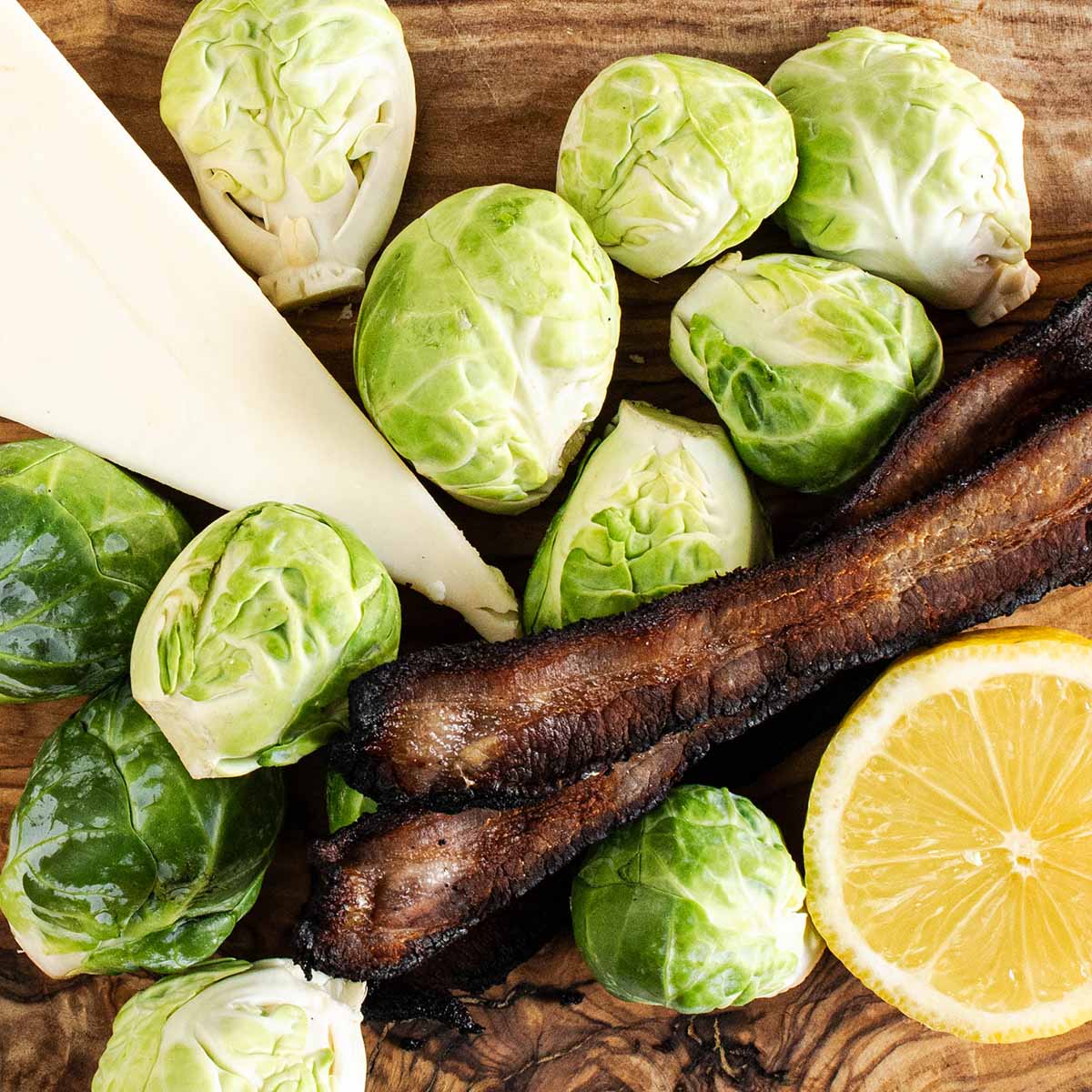
Recipes
Browse through 50 brussels sprouts recipes that use bacon, maple syrup, parmesan, lemon, and other ingredients that not only taste great, but reduce the bitterness as well.

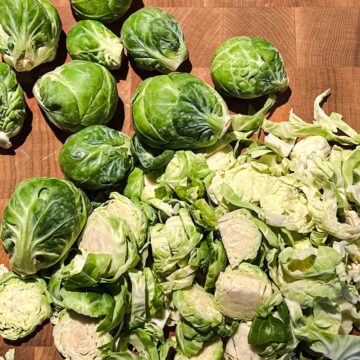
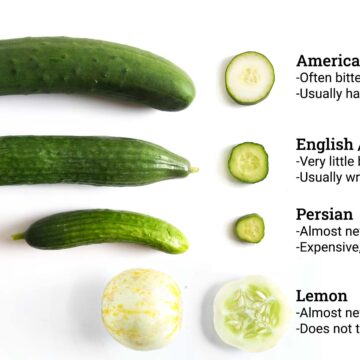
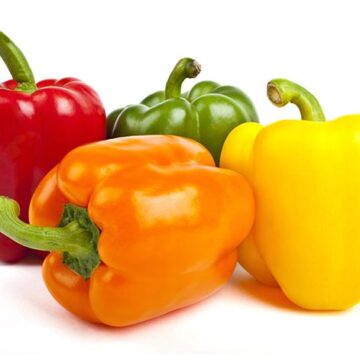

Leave a Reply